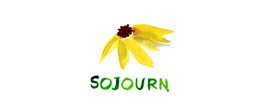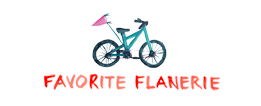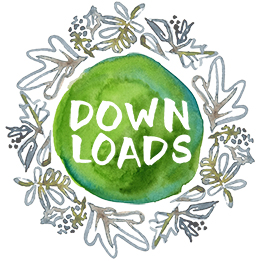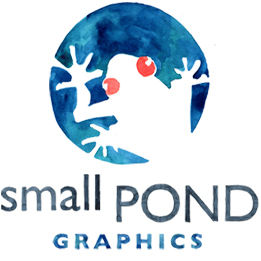In my last post I promised that January was Logo Month around the Small Pond. Logo designs are one of very favorite kinds of projects because they are usually about saying the most with the most simplicity. I love the challenge of that balancing act. I’m hoping to take time this month to share some thoughts and ideas about logos and the process of designing them. A business or organization’s logo is the center point in its marketing and branding efforts. You see them everywhere. From the golden arches to the favorite team to the swoosh, logos are one of the most recognizable elements of a company’s visual image. And, often times, they work to promote a company or product without our even realizing it. When you drive by those arches, you probably don’t consciously think “Why that’s a McDonald’s restaurant!” No, you just instinctively know it because you’ve seen the golden “M” so many times in so many places. That’s the power of a logo. In graphic design circles, we call it an “identity.” That’s because when used consistently, your logo really becomes something that identifies your business in the marketplace.
So what makes up a logo? For this month’s first themed post, I thought I would share what I consider to be the anatomy of a logo. Depending on the type of business, organization or product it represents, these various elements might be used to create the most appropriate and effective visual identity. To illustrate my point, let’s look at this logo I developed last year for a new life-coaching company. It shows three elements of a logo that I feel are important to consider when determining your visual identity. [Loved working with my friend Andrea on this project. Here’s her website!]
1. Wordmark
Simply put, the wordmark is your business name. But, it’s not just the words themselves. Your wordmark is the WAY the words are written. It includes the font style, the arrangement of words or letters, and even the color. You’ll notice from the example above the “Inside Voice Coaching” has a specific arrangement with different font and scale choices for each word. When used consistently, this arrangement will be perceived as a whole, rather than the individual words and letters. So even without actually reading the words, the target audience will recognize that it represents the coaching company.
It is very common for brands to have more than one arrangement for their wordmark. A good logo should be flexible enough to offer options that will work in both horizontal and vertical applications as well as large and small. However, the various arrangements of a wordmark should maintain a consistent look with similar font and color treatment.
2. Icons
The swoosh. It’s a visual element that represents Nike even when the word isn’t displayed. In fact, the swoosh may be even more widely recognized than any font that’s been used for the name of the company. Visual images have power. People are often drawn to “pictures” rather than words, especially given the number of words most people see every day. Creating an “icon” as part of your business or organization’s logo gives you an opportunity to tell a story about what you do or what products you offer. In the example above, both the figure of the man and the “talk bubble” serve as icons. They reinforce the entire business concept in a visual and more abstract way.
A logo design that includes one or more icons offers many branding opportunities that can be expanded throughout your marketing efforts. The icons provide additional components in your visual arsenal to make your brand visual even where your company name isn’t included. Icons might be used as bullet points or content cues on a website. They might adorn a shopping bag or a t-shirt. They might give that extra touch to the 2nd sheets of your printed letters. The list goes on.
3. Tag Line
It’s my word for the phrase you sometimes see adjacent to a logo offering more explanation. Marketing folks might call it a “positioning statement”. Not all logos require one, but in cases where the business concept is more abstract or where you want to expand the marketing message of a logo, it can be helpful. In the example above, the statement “promoting growth, change & development” offers a one-liner about the company philosophy. I usually recommend that a tagline be positioned in a logo so that it can be easily removed with the logo effectiveness still in tact.
Of course, not all these elements are used in every logo. I encourage my clients to look at what’s really necessary for representing their business across multiple marketing channels and over time. Sometimes the simplicity of a wordmark is all that’s needed to create the right image. Sometimes a tagline becomes redundant or overcomplicates. In these examples from past projects I’ve worked on, you’ll see that your logo’s anatomy doesn’t necessarily follow strict rules. Because one of the goals of a logo is to help your company or products stand out from the crowd, the priority is always communicating WHO you are and WHAT you do in an innovative way.
Leave your comments and questions about developing a logo here and I’ll offer my best expertise.






 Hello & welcome! I’m Haley Montgomery, and I’m the designer and owner of
Hello & welcome! I’m Haley Montgomery, and I’m the designer and owner of 















